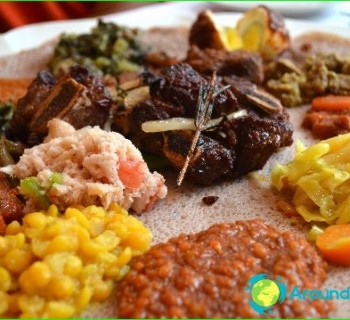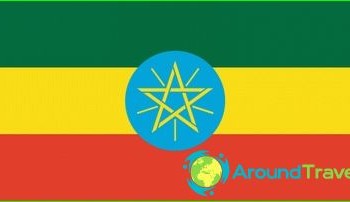Population of Ethiopia

Ethiopia has a population of over 93 million.
National composition:
- amhara;
- oromo;
- other peoples (somali, sidamo, afar, agau, tigers, gurage).
Amhara is inhabited by villages and cities of the provinces of Gojam, Shoa, Gondar, Tigers - the provinces of Eritrea and Tigray, Oromo - the Ethiopian Highlands, Somalis - areas in the southeast of Ethiopia, Sadamo and Cambatto - the southwest of the country (mountainous areas), and Afars and Sakho - roam the Danakil Desert. In addition, Armenians and Greeks live in Ethiopia (Addis Ababa and other large cities), as well as Arabs from Sudan and Yemen (eastern regions of the country).
77 people live per 1 sq. Km, but the most densely populated areas of the Ethiopian Highlands, and the least populated province of Bale (population density - 6 people per 1 sq. Km).
Official language - Amharic (English is actually the second official language).
Major cities: Addis Ababa, Nazret, Hole Dawa, Gondar, Harer.
Ethiopians profess Islam, Christianity (Monophysitism), paganism.
Life span
On average, Ethiopians live up to 47 years.
More recently, Ethiopia has virtually no public health system. Today Addis Ababa and all provincial centers have clinics, hospitals and health posts. But despite this, there is only 1 doctor for 47,000 inhabitants..
The main problems in the country are AIDS (5% of the population is infected with it, including 250,000 children), widespread hunger due to lack of food, and an urgent need for humanitarian aid. Black fever (a tropical disease caused by parasites that attack the immune system), yellow fever, malaria are common fatal diseases in Ethiopia.
Ethiopian traditions and customs
Ethiopians are honest and courageous people who instill in their children respect for their parents and the older generation..
As for wedding traditions, girls get married as soon as they turn 12-13 years old. The traditions of the Surma tribe deserve special attention - a few months before the wedding, a clay disc is inserted into the lower lip of the girls, after piercing this lip. And after a while, they remove 2 lower teeth so that they do not interfere with the location of the disc (the size of the disc depends on the bride's dowry: the richer it is, the larger the disc should be). On the wedding day, the groom must go to the bride's house, but he will not be allowed there until he dances and sings songs and jokes.
If you are going to Ethiopia, take the utmost care in your diet - food is often stored here differently than it is customary in Europe, so there are frequent cases of poisoning and other diseases.


